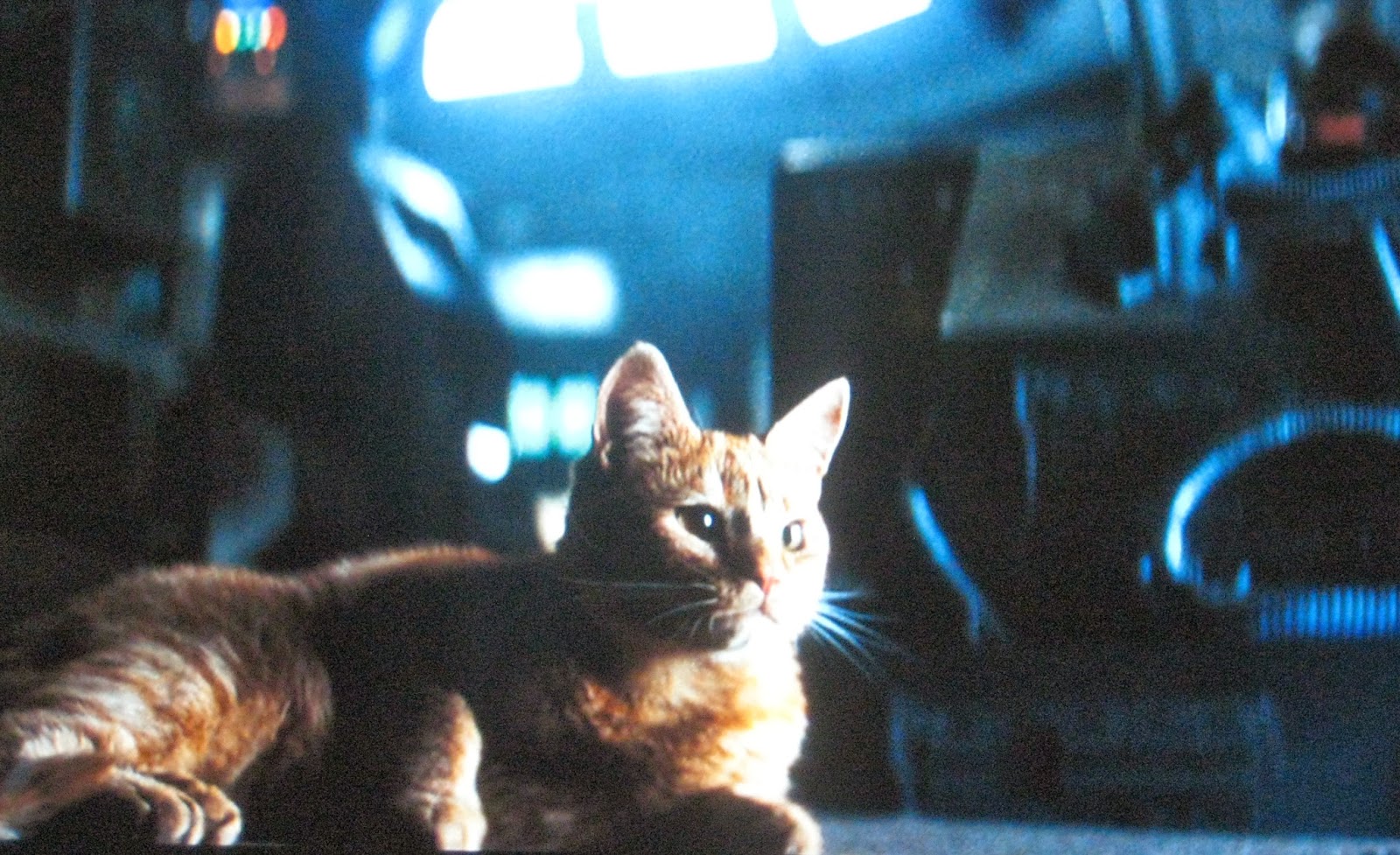Not to blow my own trumpet, but I am something of a cat whisperer. Maybe it’s because they see something of their cold aloofness in my personality, maybe it’s because I am desperate for affection but there is something about me that can turn even the cattiest of cats into a simpering bundle of fluff. Recently I thought I had met my match.The French cat. Loaded with all of the antisocial tendencies of a normal cat and then piled with a whole lot more from the French, they looked at me with pure disdain, as if they could smell something distinctly English (and therefore classless) about me. Mais non. I conquered them, too. After months and months of desperately throwing myself at them, offering them tit bits of tuna and hours and hours of tummy tickles, they too have sucuumbed to me. Sweet, sweet victory.
All of this seems rather pointless and quite narcissistic but actually, my feline fantasies have led me to something (a little) more interesting. Cats on film. Film catz. The ever-elusive flash of the feline form on film is enough to make any disinterested cinema-goer weak at the knees. Throw a cat into any story-line and it’s sure to be remembered. Thanks to their mercurial personalities, cats have the ability to imbue a cinema narrative with a little something extra, inhabiting a huge variety of personas in their silky, sashaying bodies.
In all seriousness, cats are perhaps the ultimate cinematic figure. Silent enough to provoke mystery, changeable enough to keep the audience on their toes, they are frequently used as figureheads for what cannot be said in words. Representing all manner of characters, from evil to seductive to nonchalant to clumsy, the cat places the film world within a very specific boundary without the awkwardness of blatant narrative explanation. Heralded by Chris Marker, feared by Agatha Trunchbull, the cat has a deep cinematic history which has undeniably shaped the way that have enjoyed film for the last 100 years or so.
Alien (Ridley Scott, 1979)
The quintessential cat of the movies, Scott’s Jones was perhaps the most loved character in the entire Alien franchise. Jones is cinema’s classic cat; never inhabiting one cat profile for any length of time, he allows the characters to do things which, without a cat’s presence, would be weird. Plodding through the vast spaceship, turning up remarkably unscathed, Jones allows the characters reason to speak to themselves, or to stray from safety in order to collect him. Bravo to the ginger cat for single-handedly driving a cinematic plot.
Withnail and I (Bruce Robinson, 1987)
Which cat owner hasn’t spat the words “yet again, that oaf has destroyed my day” to their feline companion? Not this one. Monty’s chocolate Persian cat is the irritator, the one who claws and cries constantly when alone in your company and inexplicably turns into a cuddle machine in the presence of others. You react with hatred and bile and, voila, you’re a psychopath. The classic underhand cat move. There is no other animal which can reduce a human to quite the same fractured mental state as a cat. And for that, we must salute them.
L’Atalante (Jean Vigo, 1934)
Cats in L’Atalante are abundant, spilling out of canal boats, nesting in human beds, clinging to any surface they can get theirs claws into. In Vigo’s masterpiece, cats highlight the antisocial tendencies of the film’s gloomy protagonist, Jean. As Jean becomes increasingly stroppy with his new bride, he takes it out on the ship’s cats. True to form, the cats remain uncontrollably cute, accentuating the rootlessness of Jean’s actions and intensifying his bad guy status.The wonder of the cat lies in their mercurial ability to change their mood and somehow make the owner the villain. They are the ninjas of the domestic pet world.
Cat People (Jacques Tourneur, 1942)
In Cat People, the inevitable merging of human and feline bodies is made manifest. When Oliver Reed falls in love with the mysterious Irene, he believes that his dreams have been made. There’s something about, Irene, though, that is a little off. When darkness falls and no one is around, Irene transforms into a magnificent, bloodthirsty panther. Spelling concerns for rife female sexuality, Cat People made the lustful woman the villain without spelling its purposes out. In the big cat, the dangers of unchecked (blood)lust are made manifest. Cats are a force to be reckoned with and in Cat People, their efforts of seduction are definitely made with ill intent.
Kiki’s Delivery Service (Hayao Miyazaki, 1989)
Kiki’s Delivery Service features one of the sassiest cats in cinema’s history. Telling the story of a young witch leaving home for the first time, the film follows the ups and down of young adult life, all set against the meticulously beautiful background of Miyazaki’s film world. Jiji, Kiki’s cat, accompanies her on her adventures, offering a wry and sarcastic commentary to her upbeat interjections. Jiji’s dryness grounds Kiki very much in human reality whilst offering a counterpoint to her way of thinking. Their relationship, whilst verbal, is more like the relationship we have with our cats than any other on screen. The cats complain and hate us and brood but essentially, they cannot do without us, nor us without them.
La Dolce Vita (Federico Fellini, 1960)
The thing that very few people remember about Fellini’s black and white masterpiece was the cats. And why should they? When Anita Ekberg is frollocking in the Trevi fountain, I’m sure that few would recall little more. However, before she made this iconic cinematic move she decided, quite nonchalantly, to place a kitten on her head. Could we not say, then, that cats were the very inspiration for the scene? Probably not. Regardless, the cat is ornamental, it flourishes the grandeur of Ekberg’s character’s act in a suitably ridiculous way. In La Dolce Vita, the cat is the emblem of the recklessly rich. And truly, were they ever not so?

